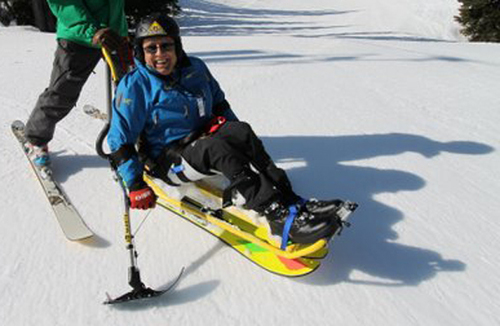Via Scoop.it – ALS Lou Gehrig’s Disease
Researchers first associated mutations in the SOD1 gene with familial ALS in 1993, one of the first times that a specific gene had been associated with the illness. Since this discovery nearly twenty years ago, scientists have been hard at work trying to figure out exactly how changes in the SOD1 protein can lead to ALS. Two new studies published in the Proceedings of the National Academy of Sciences by Packard scientists in March have revealed some important clues in the relationship between SOD1 and ALS. Only a small percentage of ALS patients carry an inherited mutation in SOD1, yet some studies revealed that the SOD1 protein doesn’t work properly even in sporadic ALS patients without a known mutation in the gene. Packard Center Science Director Piera Pasinelli showed that SOD1 is over-oxidized in certain disease-fighting white blood cells in sporadic ALS patients with bulbar onset. When further stressed, this over-oxidized SOD1 acquires toxic properties similar to those seen in mutant SOD1, linking mechanisms of toxicity between a subset of sporadic and familial patients respectively. In a separate study, Packard researchers Jonathan Glass, a neuroscientist at Emory University in Atlanta, and Jean Pierre Julien, a neuroscientist at Laval University in Quebec, developed antibodies to recognize misfolded SOD1 in motor neurons in familial ALS patients. Although mutant SOD1 is found in every cell in the body, the antibodies only recognized the misfolded SOD1 in dying motor neurons. This indicates, Glass said, that specific changes are happening to SOD1 in motor neurons during the course of disease.“We still don’t know the cause of ALS. We know that a mutation in certain genes is associated with ALS, but we don’t know why these mutations kill cells,” Glass said. These studies are helping researchers figure out this association.
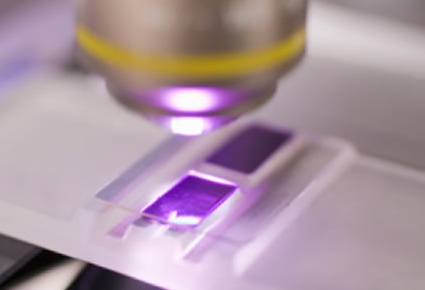
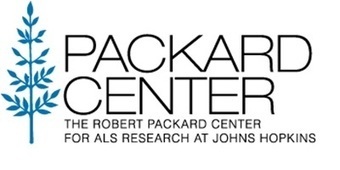 It was a meeting of the minds. On March 8th, 9th, and 10th, Packard Center grantees gathered at the Baltimore Marriott Waterfront to present and discuss their research findings from the past year. Unlike previous years, the symposium’s format integrated bench science with clinical research findings. As Packard Science Director Piera Pasinelli noted at the start of the first day, lab results and clinical trials inform each other. When each perspective learns from the other, Pasinelli said, scientists will move more quickly towards finding promising therapeutic targets to develop into drugs for ALS. “The goal of Packard has always been to bring new discoveries forward and closer to the clinic as quickly as possible,” said Pasinelli. “By encouraging these partnerships and exchange of ideas between clinicians and bench scientists, we want to take the most promising scientific ideas to the attention of the clinicians faster. Because basic and clinical science inform each other, this exchange is also beneficial to refine strategies in the lab and in the clinic.” Perhaps the most significant breakthrough in ALS science in the past year has been the discovery of the repeat expansion on chromosome 9. Known as C9ORF72, it was co-discovered by Packard Scientist Bryan Traynor and is the most common genetic cause of familial ALS in North America. The identification of hundreds of copies of a repeating six DNA base pair sequence was a milestone, but like many important scientific discoveries, it raised more questions than it answered.
It was a meeting of the minds. On March 8th, 9th, and 10th, Packard Center grantees gathered at the Baltimore Marriott Waterfront to present and discuss their research findings from the past year. Unlike previous years, the symposium’s format integrated bench science with clinical research findings. As Packard Science Director Piera Pasinelli noted at the start of the first day, lab results and clinical trials inform each other. When each perspective learns from the other, Pasinelli said, scientists will move more quickly towards finding promising therapeutic targets to develop into drugs for ALS. “The goal of Packard has always been to bring new discoveries forward and closer to the clinic as quickly as possible,” said Pasinelli. “By encouraging these partnerships and exchange of ideas between clinicians and bench scientists, we want to take the most promising scientific ideas to the attention of the clinicians faster. Because basic and clinical science inform each other, this exchange is also beneficial to refine strategies in the lab and in the clinic.” Perhaps the most significant breakthrough in ALS science in the past year has been the discovery of the repeat expansion on chromosome 9. Known as C9ORF72, it was co-discovered by Packard Scientist Bryan Traynor and is the most common genetic cause of familial ALS in North America. The identification of hundreds of copies of a repeating six DNA base pair sequence was a milestone, but like many important scientific discoveries, it raised more questions than it answered. Neuralstem, Inc. announced that safety results from the first 12 patients with amyotrophic lateral sclerosis (ALS or Lou Gehrig’s disease) to receive its stem cells were reported online in the peer-reviewed publication, STEM CELLS, on March 13th. “Lumbar Intraspinal Injection of Neural Stem Cells in Patients with ALS: Results of a Phase I Trial in 12 Patients” reports that one patient has shown improvement in his clinical status, even though researchers caution that the study was not designed to show efficacy. Additionally, there was no evidence of accelerated disease progression due to the intervention in any of the 12 patients, who were followed from 6-18 months after they were transplanted with the cells. All of the patients, who received transplants in the lumbar (lower back) region, tolerated the treatment without any long-term complications related to either the surgery or the cells. The 12 patients, part of the ongoing Phase I trial to evaluate the safety of Neuralstem’s stem cells and transplantation procedure in patients with ALS, were the first in the world to receive intraspinal stem cell injections. “For these first 12 patients, we have met the objective of the Phase I trial, demonstrating safety for both the procedure of intraspinal injection and the presence of the neural stem cells in the spinal cords of ALS patients,” said Jonathan Glass, MD, lead author of the publication. “We are encouraged by these results and have now advanced our trial to injections into the cervical spinal cord, targeting the motor neurons that control respiratory function.” Dr. Glass is Professor of Neurology and Pathology at Emory University School of Medicine, as well as the Director of the Emory ALS Center. “As this article points out, our experience in the lumbar spinal cord has been overwhelmingly positive,” commented Karl Johe, PhD, study author and Neuralstem Chairman and Chief Scientific Officer. “We have already transplanted two patients in the cervical spinal cord, where we believe we can affect patients’ lives the most by improving their breathing. We are in active discussions with the FDA to increase the number of cells and the number of injections as well.”…
Neuralstem, Inc. announced that safety results from the first 12 patients with amyotrophic lateral sclerosis (ALS or Lou Gehrig’s disease) to receive its stem cells were reported online in the peer-reviewed publication, STEM CELLS, on March 13th. “Lumbar Intraspinal Injection of Neural Stem Cells in Patients with ALS: Results of a Phase I Trial in 12 Patients” reports that one patient has shown improvement in his clinical status, even though researchers caution that the study was not designed to show efficacy. Additionally, there was no evidence of accelerated disease progression due to the intervention in any of the 12 patients, who were followed from 6-18 months after they were transplanted with the cells. All of the patients, who received transplants in the lumbar (lower back) region, tolerated the treatment without any long-term complications related to either the surgery or the cells. The 12 patients, part of the ongoing Phase I trial to evaluate the safety of Neuralstem’s stem cells and transplantation procedure in patients with ALS, were the first in the world to receive intraspinal stem cell injections. “For these first 12 patients, we have met the objective of the Phase I trial, demonstrating safety for both the procedure of intraspinal injection and the presence of the neural stem cells in the spinal cords of ALS patients,” said Jonathan Glass, MD, lead author of the publication. “We are encouraged by these results and have now advanced our trial to injections into the cervical spinal cord, targeting the motor neurons that control respiratory function.” Dr. Glass is Professor of Neurology and Pathology at Emory University School of Medicine, as well as the Director of the Emory ALS Center. “As this article points out, our experience in the lumbar spinal cord has been overwhelmingly positive,” commented Karl Johe, PhD, study author and Neuralstem Chairman and Chief Scientific Officer. “We have already transplanted two patients in the cervical spinal cord, where we believe we can affect patients’ lives the most by improving their breathing. We are in active discussions with the FDA to increase the number of cells and the number of injections as well.”…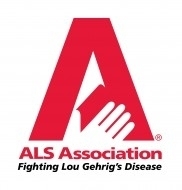 An article published in the journal Proceedings of the National Academy of Sciences reports a breakthrough using cutting-edge stem cell research, which could speed up the discovery of new treatments for amyotrophic lateral sclerosis (ALS) also known as motor neuron disease (MND) outside the United States. An international research team, led by the Euan MacDonald Centre for Motor Neurone Disease Research at the University of Edinburgh in partnership with researchers from King’s College London; Columbia University, New York; and the University of San Francisco, has created motor neurons using skin cells from a person with an inherited form of ALS/MND. Researchers discovered that abnormalities of a protein called TDP-43, implicated in more than 90% of cases of ALS/MND, resulted in the death of motor neuron cells. This is the first time that scientists have been able to see the direct effect of abnormal TDP-43 on human motor neurons cultured in a dish. Professor Siddharthan Chandran from the University of Edinburgh said, “Using patient stem cells to model MND in a dish offers untold possibilities for how we study the cause of this terrible disease as well as accelerating drug discovery by providing a cost-effective way to test many thousands of potential treatments.”
An article published in the journal Proceedings of the National Academy of Sciences reports a breakthrough using cutting-edge stem cell research, which could speed up the discovery of new treatments for amyotrophic lateral sclerosis (ALS) also known as motor neuron disease (MND) outside the United States. An international research team, led by the Euan MacDonald Centre for Motor Neurone Disease Research at the University of Edinburgh in partnership with researchers from King’s College London; Columbia University, New York; and the University of San Francisco, has created motor neurons using skin cells from a person with an inherited form of ALS/MND. Researchers discovered that abnormalities of a protein called TDP-43, implicated in more than 90% of cases of ALS/MND, resulted in the death of motor neuron cells. This is the first time that scientists have been able to see the direct effect of abnormal TDP-43 on human motor neurons cultured in a dish. Professor Siddharthan Chandran from the University of Edinburgh said, “Using patient stem cells to model MND in a dish offers untold possibilities for how we study the cause of this terrible disease as well as accelerating drug discovery by providing a cost-effective way to test many thousands of potential treatments.”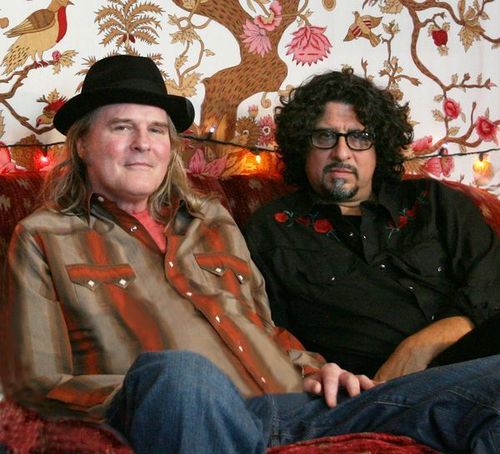 Eric Lowen, 60, a singer, songwriter, guitarist and half of the Lowen and Navarro folk group who with his songwriting partner Dan Navarro penned “We Belong” for Pat Benatar, died Friday at Kaiser Permanente Panorama City Hospital, the band announced. Lowen had been diagnosed with amyotrophic lateral sclerosis, also known as ALS or Lou Gehrig’s disease, in 2004. The degenerative disease affects nerve cells in the brain and spinal cord and eventually weakens muscles throughout the body. Born Oct. 23, 1951, in Utica, N.Y., Lowen met Navarro in Los Angeles in the early 1980s when they worked as singing waiters at the Great American Food and Beverage Co. After they discovered they harmonized together well, they began performing and writing songs as a duo. The pair wrote “We Belong” for Benatar in 1984 and it became a top-five hit for her. Lowen, who was tall and blond, and the dark-haired Navarro regularly sang their acoustic versionin concert. The two also wrote for such pop acts as the Bangles, Dave Edmunds and David Lee Roth, and they composed jingles for commercials and TV shows. Beginning in 1988 Lowen and Navarro played a regular acoustic gig at the Breakaway in Venice, and they released their first album, “Walking on a Wire,” in 1990. They released a handful of studio albums and toured extensively until 2009, when Lowen’s condition worsened.
Eric Lowen, 60, a singer, songwriter, guitarist and half of the Lowen and Navarro folk group who with his songwriting partner Dan Navarro penned “We Belong” for Pat Benatar, died Friday at Kaiser Permanente Panorama City Hospital, the band announced. Lowen had been diagnosed with amyotrophic lateral sclerosis, also known as ALS or Lou Gehrig’s disease, in 2004. The degenerative disease affects nerve cells in the brain and spinal cord and eventually weakens muscles throughout the body. Born Oct. 23, 1951, in Utica, N.Y., Lowen met Navarro in Los Angeles in the early 1980s when they worked as singing waiters at the Great American Food and Beverage Co. After they discovered they harmonized together well, they began performing and writing songs as a duo. The pair wrote “We Belong” for Benatar in 1984 and it became a top-five hit for her. Lowen, who was tall and blond, and the dark-haired Navarro regularly sang their acoustic versionin concert. The two also wrote for such pop acts as the Bangles, Dave Edmunds and David Lee Roth, and they composed jingles for commercials and TV shows. Beginning in 1988 Lowen and Navarro played a regular acoustic gig at the Breakaway in Venice, and they released their first album, “Walking on a Wire,” in 1990. They released a handful of studio albums and toured extensively until 2009, when Lowen’s condition worsened. An overview of the development of TDI 132 for use in ALS (amyotrophic lateral sclerosis, or Lou Gehrig’s disease) was the topic of a webinar hosted March 12, 2012, by the nonprofit biotech ALS Therapy Development Institute (ALS TDI) of Cambridge, Mass. TDI 132, also known as Gilenya, has received approval from the U.S. Food and Drug Administration (FDA) for use in multiple sclerosis. The drug works by modulating the immune system.ALS TDI CEO and Chief Scientific Officer Steve Perrin, and James Berry, a clinical research fellow and MDA grantee at Massachusetts General Hospital in Boston, discussed numerous aspects of TDI 132’s development and advancement to clinical trials. The webinar has been archived on ALS TDI’s website and is available for viewing to all who login or register.
An overview of the development of TDI 132 for use in ALS (amyotrophic lateral sclerosis, or Lou Gehrig’s disease) was the topic of a webinar hosted March 12, 2012, by the nonprofit biotech ALS Therapy Development Institute (ALS TDI) of Cambridge, Mass. TDI 132, also known as Gilenya, has received approval from the U.S. Food and Drug Administration (FDA) for use in multiple sclerosis. The drug works by modulating the immune system.ALS TDI CEO and Chief Scientific Officer Steve Perrin, and James Berry, a clinical research fellow and MDA grantee at Massachusetts General Hospital in Boston, discussed numerous aspects of TDI 132’s development and advancement to clinical trials. The webinar has been archived on ALS TDI’s website and is available for viewing to all who login or register. A $25 million gift has enabled Johns Hopkins to establish a new center to develop novel therapies for the neurodegenerative disease known as amyotrophic lateral sclerosis, Lou Gehrig’s disease, or ALS. Much of the center’s research will focus on using stem cells individually derived from ALS patients to develop new model systems to investigate how nerve cells degenerate, as tools to screen new drug therapies, and to develop stem cell therapies as transplants to potentially slow or reverse the disease. The new center, dedicated March 21 and formally known as the Michael S. and Karen G. Ansari ALS Center for Cell Therapy and Regeneration Research at Johns Hopkins, is named for its benefactors: Michael and Karen Ansari. Michael Ansari is the founder, chairman and CEO of M.I.C. Industries. The gift, representing a five-year commitment, will fund a variety of efforts that aim to eventually cure ALS. The disease targets motor neurons, a type of nerve cell that controls muscle movement, and affects about three out of every 100,000 individuals. “Despite knowing about this disease for decades and the large number of clinical trials that have been completed, we still have little in our arsenal to treat it,” says Nicholas J. Maragakis, M.D., an associate professor of neurology at the Johns Hopkins University School of Medicine, co-medical director of the ALS Clinic and director of the new center. “We are now able to think out of the box about this disease. The goals of a center will focus on the use of stem cells as tools to foster aggressive programs in discovering the underlying mechanisms behind what causes ALS and rapidly translating these discoveries to the patients in our clinic.”
A $25 million gift has enabled Johns Hopkins to establish a new center to develop novel therapies for the neurodegenerative disease known as amyotrophic lateral sclerosis, Lou Gehrig’s disease, or ALS. Much of the center’s research will focus on using stem cells individually derived from ALS patients to develop new model systems to investigate how nerve cells degenerate, as tools to screen new drug therapies, and to develop stem cell therapies as transplants to potentially slow or reverse the disease. The new center, dedicated March 21 and formally known as the Michael S. and Karen G. Ansari ALS Center for Cell Therapy and Regeneration Research at Johns Hopkins, is named for its benefactors: Michael and Karen Ansari. Michael Ansari is the founder, chairman and CEO of M.I.C. Industries. The gift, representing a five-year commitment, will fund a variety of efforts that aim to eventually cure ALS. The disease targets motor neurons, a type of nerve cell that controls muscle movement, and affects about three out of every 100,000 individuals. “Despite knowing about this disease for decades and the large number of clinical trials that have been completed, we still have little in our arsenal to treat it,” says Nicholas J. Maragakis, M.D., an associate professor of neurology at the Johns Hopkins University School of Medicine, co-medical director of the ALS Clinic and director of the new center. “We are now able to think out of the box about this disease. The goals of a center will focus on the use of stem cells as tools to foster aggressive programs in discovering the underlying mechanisms behind what causes ALS and rapidly translating these discoveries to the patients in our clinic.” Prize4Life, a non-profit organization dedicated to accelerating the discovery of treatments and a cure for Amyotrophic Lateral Sclerosis (ALS), is pleased to announce the appointment of Roger D. Kornberg, PhD, to its Scientific Advisory Board. “Prize4Life is delighted to welcome such an accomplished and talented scientific mind,” said Avi Kremer, co-founder and Chief Executive Officer of Prize4Life. “Roger Kornberg is an excellent addition to our Scientific Advisory Board, which provides a high level of expert knowledge and wise counsel to Prize4Life and is integral to the success of our important mission.” Dr. Kornberg is currently a professor of structural biology at Stanford University School of Medicine, where his lab has continued to elucidate the complex process by which DNA is unraveled, read, and “transcribed” into RNA. Although his research is not directly related to ALS, Dr. Kornberg believes “Prize4Life’s mission of finding treatments and a cure for ALS is imperative. I look forward to joining the organization’s impressive assembly of scientific advisors. Through its innovative model, Prize4Life can produce real results for ALS patients.”
Prize4Life, a non-profit organization dedicated to accelerating the discovery of treatments and a cure for Amyotrophic Lateral Sclerosis (ALS), is pleased to announce the appointment of Roger D. Kornberg, PhD, to its Scientific Advisory Board. “Prize4Life is delighted to welcome such an accomplished and talented scientific mind,” said Avi Kremer, co-founder and Chief Executive Officer of Prize4Life. “Roger Kornberg is an excellent addition to our Scientific Advisory Board, which provides a high level of expert knowledge and wise counsel to Prize4Life and is integral to the success of our important mission.” Dr. Kornberg is currently a professor of structural biology at Stanford University School of Medicine, where his lab has continued to elucidate the complex process by which DNA is unraveled, read, and “transcribed” into RNA. Although his research is not directly related to ALS, Dr. Kornberg believes “Prize4Life’s mission of finding treatments and a cure for ALS is imperative. I look forward to joining the organization’s impressive assembly of scientific advisors. Through its innovative model, Prize4Life can produce real results for ALS patients.”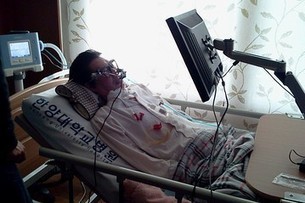 A group of engineers at Samsung Electronics have come up with a low-cost eye-controlled computer mouse that they hope will enable a wider number of severely disabled people to use computers. Samsung’s “eyeCan” device builds on the functions of the eyeWriter, allowing users to enter text by blinking while looking at an on-screen keyboard and includes a navigation function for users to do things like exploring streets on a map. While the product isn’t unique, similar devices already in the market have hefty price tags of up to around $10,000. Samsung isn’t actually selling the eyeCan; it provides the software and instructions on how to make the device from readily available components costing around $50.
A group of engineers at Samsung Electronics have come up with a low-cost eye-controlled computer mouse that they hope will enable a wider number of severely disabled people to use computers. Samsung’s “eyeCan” device builds on the functions of the eyeWriter, allowing users to enter text by blinking while looking at an on-screen keyboard and includes a navigation function for users to do things like exploring streets on a map. While the product isn’t unique, similar devices already in the market have hefty price tags of up to around $10,000. Samsung isn’t actually selling the eyeCan; it provides the software and instructions on how to make the device from readily available components costing around $50.